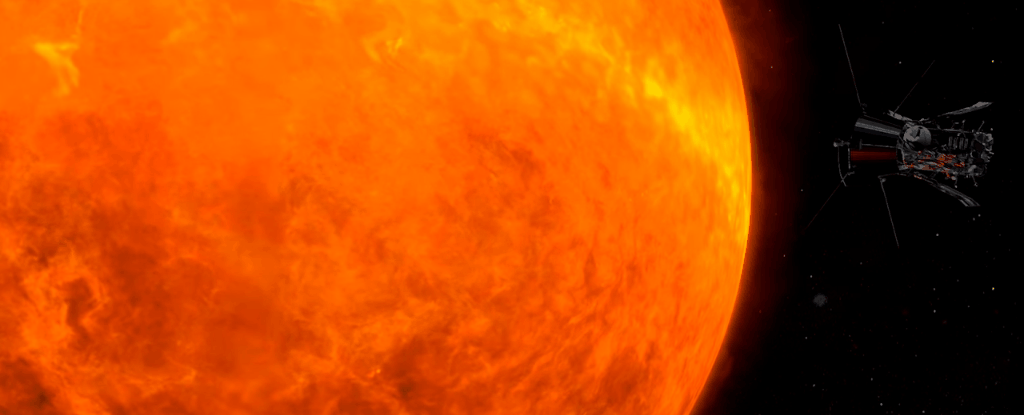
In just a few weeks, NASA is due to launch one of its most ambitious projects yet. The Parker Solar Probe is going to swoop in and 'touch' the Sun - coming in closer to the solar surface than any probe has ever done before.
Parker's three closest orbits will bring it within 6.1 million kilometres (3.8 million miles) of the Sun's surface and inside its outer atmosphere, or corona, where temperatures reach millions of degrees Kelvin.
It does have heat shielding, and it's actually pretty wicked, but we'll get into that later. Because first, we have to address those searing temperatures.
It seems like even the fanciest heat shielding would melt under those conditions - after all, surface temperatures of around 733 Kelvin (460 degrees Celsius and 860 Fahrenheit) on Venus contributed to some pretty rapid electronics failures in the probes Russia sent in the 1980s.
As NASA has explained, the trick to protecting Parker lies in the difference between temperature and heat, along with the density of space.
Temperature is a measurement of how fast particles are moving, but heat measures how much energy they actually transfer. In space, you can have particles moving very fast, but not transferring a lot of heat, because there's a lot of space between those particles.
"The corona through which Parker Solar Probe flies, for example, has an extremely high temperature but very low density," NASA's Susannah Darling explained.
"Think of the difference between putting your hand in a hot oven versus putting it in a pot of boiling water (don't try this at home!) - in the oven, your hand can withstand significantly hotter temperatures for longer than in the water where it has to interact with many more particles.
"Similarly, compared to the visible surface of the Sun, the corona is less dense, so the spacecraft interacts with fewer hot particles and doesn't receive as much heat."
That means the heat shield, which protects most of the instruments on board the probe, will only be heated to about 1,644 degrees Kelvin (1,370 C° or 2,500 F°).
It's fantastic technology, really. It's made of two superheated carbon-carbon composite boards, which sandwich a 11.5-centimetre (4.5-inch) carbon-foam core.
The Sun-facing side is painted brilliant white in ceramic paint to deflect as much of the Sun's light as possible; it's about 2.4 metres (8 feet) in diameter. The shield weighs just 72.5 kilograms (160 pounds) because of the lightness of the foam.
And, amazingly, it keeps everything behind it at or below 300 Kelvin (30 C° or 85 F°).
[embedded content]
Instrumentation that needs to be able to work outside the safety of the heatshield is protected by its materials. The probe's Faraday cup, to catch charged particles in order to measure their flow, is made of titanium-zirconium-molybdenum, which has a melting point of about 2,622 Kelvin.
The chips that produce the electric field for the instrument are forged from tungsten, the metal with the highest known melting point - 3,695 Kelvin.
And the electrical wiring is made out of niobium, which has a melting point of 2,750 Kelvin. Sensors on the spacecraft's body will help it correct its orientation so that the delicate instrumentation does not become exposed to the Sun's scorching rays.
As for the solar panels, which are used to collect solar energy to power the probe, they can retract behind the heat shield to prevent overheating when Parker gets too close to the Sun.
The whole probe is cooled by pressurised deionised water, the liquid best able to handle the temperature extremes to which Parker will be exposed.
You have to admit, that is a lot of ingenious engineering. We can't wait to see what Parker helps us find out about the Sun, its crazy wind and its even crazier outer atmosphere.
Read Again Here's How NASA's Solar Probe Is Going to Touch The Sun Without Melting : https://ift.tt/2uQ22IFBagikan Berita Ini















0 Response to "Here's How NASA's Solar Probe Is Going to Touch The Sun Without Melting"
Post a Comment